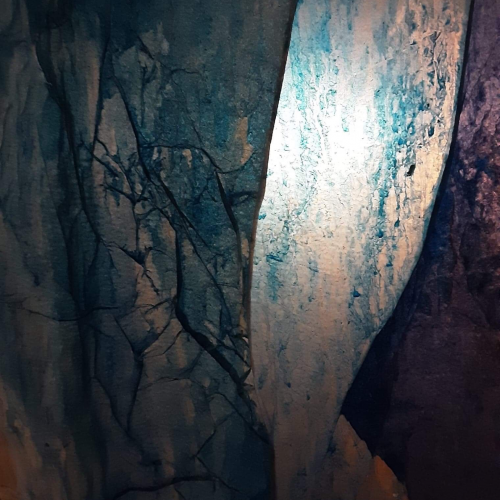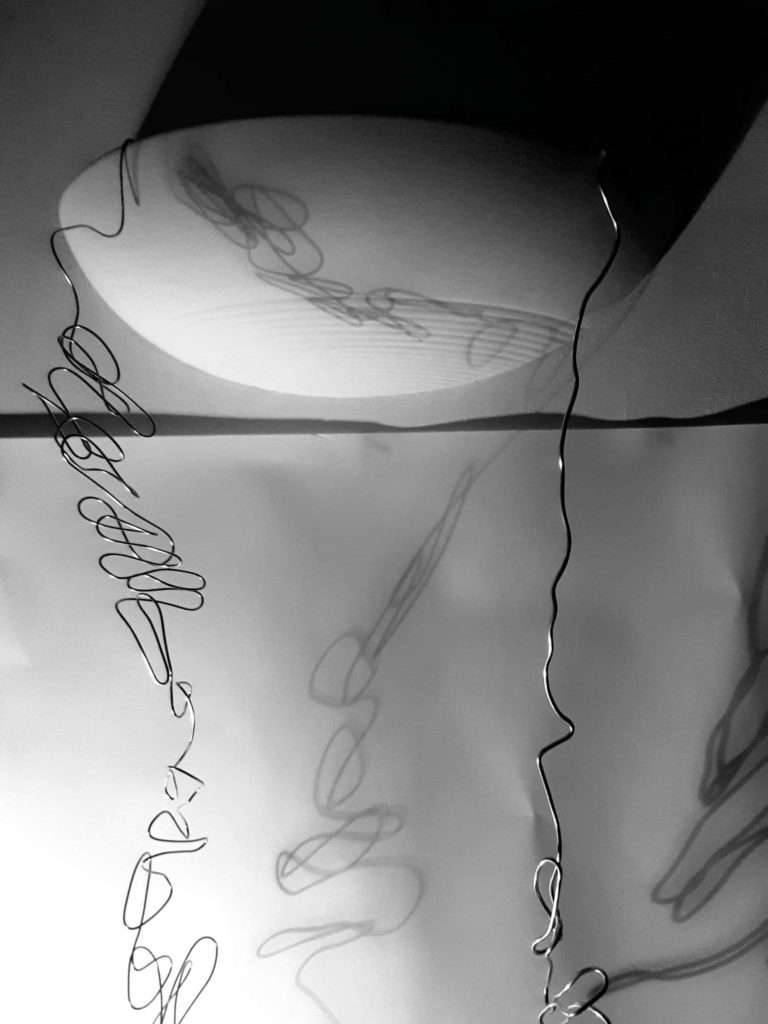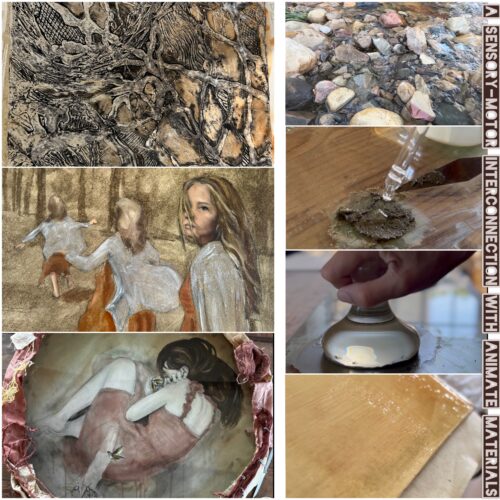
Student stories: In conversation with: Caroline Conolly
Caroline Conolly is part-way through her first OCA Level 1 (HE4) course, Exploring Drawing Media. During assignment 2 her tutor, Cheryl Huntbach noticed a particularly liberated, curious and playful approach to Caroline’s drawing processes and methodologies. She invited Caroline to have a conversation about her approaches and ideas, which might be equally fascinating and insightful for other students to read.
Caroline could you tell us something about your life, background and education before starting on the Level 1 course, Experimental Drawing Media (EDM).
I have degrees in Behavioural Sciences and Occupational Therapy, but always harboured a desire to do an art degree. I did a part time Btec National Diploma course in Fine Art a few years ago, and have done quite a few evening classes in printmaking and life drawing over the years. I also studied Creative Writing with the Open University. I come from a working class post industrial area in the West Midlands, but am now living in a beautiful town in Wiltshire in a tiny flat that now seems to have turned into an art studio! I am enjoying walking and being inspired by nature after years of urban living.
We would like to hear about your creative journey so far with the OCA, and how you are engaging with the Exploring Drawing Media course.
I’m a few months into my first Level 1 Exploring Drawing Media course. It is a very well written course and is excellent at getting you to be more experimental. It allows me to play, so I’m very happy with that!
Since starting Exploring Drawing Media, what (if anything) has opened up your understanding, and approaches to drawing?
I’m at the beginning of this OCA journey so I have a lot to learn about my practice, but I already feel I have learnt far more than I ever expected.
Researching other artists can produce ideas and get you to try out media that you wouldn’t think to use. I also find I’m now getting more out of gallery visits, for example a recent visit to ‘Drawn’ at The Young Gallery, Salisbury as it was a great exhibition, in terms of seeing the variety of drawing styles and media used – one artist had used calamine lotion!
How has the course informed, or shifted your understanding of the nature of drawing?
Looking at other artists’ work can help you feel legitimate in trying something different out. For example, I realised that my habit of looking for interesting old books and magazines at jumble sales and charity shops can be part of my practice – Ellen Gallagher does this, this is how she found her inspiration for ’Wiglette’, from ‘Deluxe’!
I was initially slightly disgruntled at having to write a learning log, (mainly because I wasn’t sure how to write one), but now I see the use of it. It helps you become more aware of the choices you make, and how documenting experiments with media can help you see what works or doesn’t work.
It is also a good tool to get away from perfectionism, to realise that the more mistakes you make, the more you can learn from them.


Can you tell us what have you found out about your own creative process through EDM, and what helped you establish these insights?
I have recently found that daily practice really helps. I decided to document my daily walks, recording my movement through drawing. I am now documenting the light and shadows, that change on a daily basis in the tithe barn down the road. I notice something new every day. To return to the same spot on a daily basis gets you to really see, and it’s amazing what you can get out of this. I now realise that you don’t have to have a big impressive idea.
I love happy accidents and don’t really enjoy planning, although I like to stick down ideas in a mind-map form, mainly so I can chuckle at them later. Repeating processes helps – I make a lot of work and work fairly quickly – all a ploy to fight against my negative critic. Pieces of work I don’t like can always be painted over or torn up and used for collage, so nothing is wasted.
Caroline I know how much you value research as a vital part of your drawing practice. What other elements tend to inform your ideas?
I have realised that my interests in film and creative writing can feed into my artistic practice. For example, my liking for the black and white film ‘Night of the Hunter’ (1955) directed by Charles Laughton, led me to explore the use of monochrome, lighting and shadows. The life writing I have done also seems to feed into the art, and memories lead to work.
I have found that though I am not confident using technology, it is actually good fun to use digital drawing. I have found that I like moving between hand-drawn to digital processes.
I can do a drawing, take a photo and then draw on top of this digitally on my tablet, print this off, change the scale, draw on top, play around with cropping the image, paint or scratch into the photo.
In the future, how do you imagine you might explore these ideas of your’s even further?
I need to research in more depth and concentrate on sticking with an idea. I tend to jump from one idea to the next. Maybe combining my interest in film with colour, as in Wong Kar-wai’s ‘In the Mood for Love’ (2001) and perhaps, David Lynch’s ’ Blue Velvet’ (1986) in terms of my interest in the particularities of a heightened sense of colour. I enjoy playing with scale – and I’d like to work up to really large drawings, paintings or other works.
Caroline do you have any specific ambitions or things you want to achieve in the next stage of your journey?
The main thing with me is building confidence. I like getting so immersed in the creative process that I stop worrying (for a while at least,) at how good something is. If I am really interested in a theme and like using a particular media, then this helps me with the self -doubt. I fancy doing Understanding Painting Media next, because it explores materiality and process. I am looking forward to doing the Level 2 course, Investigating Drawing. I hope to carry on until I have the fine art degree, but I want to get the most out of each module in terms of personal and artistic development rather than think too much about grades and assessment at this point.
|
|







Inspirational – I find myself also loving research and getting into the details of things I find interesting. I do find c in my current painting course, POP1 that I do not always stay within the exercises, get a bit all over the show. A daily and dedicated practice of developing skills is important for me at this stage. For me working from a photograph or newspaper clipping can help me stay true to what I need to practice and still be creative with colour and brush marks.
Thanks Karen. Yes it’s good to get into the areas that really interest you isn’t it? Wondering whether to do UVC next and get more stuck into the research.
Thanks Karen. I’ve just clicked on your name and seen some of your work – great stuff! Yes I think following what interests you is a good route to take.